Abstract
The interaction of UICC crocidolite asbestos with biological membranes in vivo was studied in rats after a single intratracheal dose of a suspension of 20 mg of fibres per rat. Development of lung fibrosis (increased level of hydroxyproline, a collagen index together with corresponding pathomorphological alteration) confirmed the penetration of crocidolite fibres into the lungs in the course of seven months exposure. The pulmonary deposition of crocidolite affected the lysosomal membranes of lung cells as manifested by (1) enhanced lipid peroxidation with (2) stimulation (release) of activity of beta-glucuronidase and cathepsin D. Enhanced lipid peroxidation and activity of beta-glucuronidase may contribute to the delayed, carcinogenic effects of crocidolite asbestos.
Full text
PDF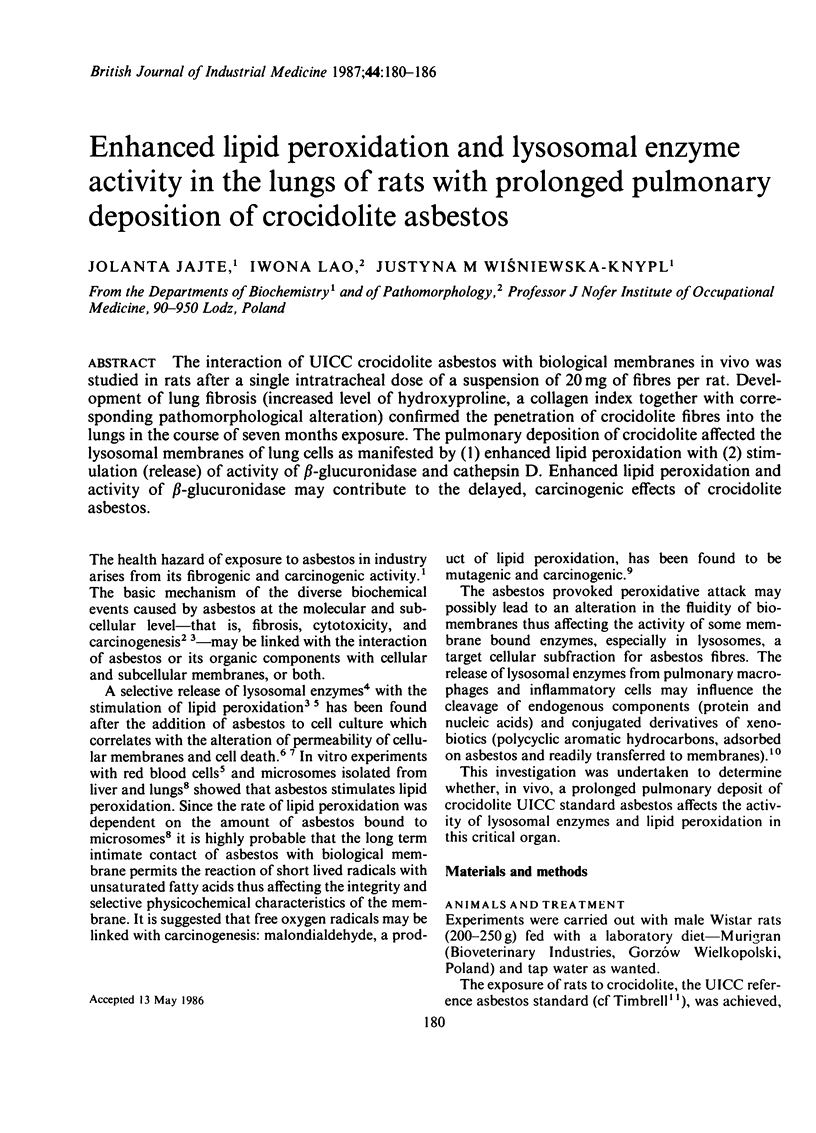
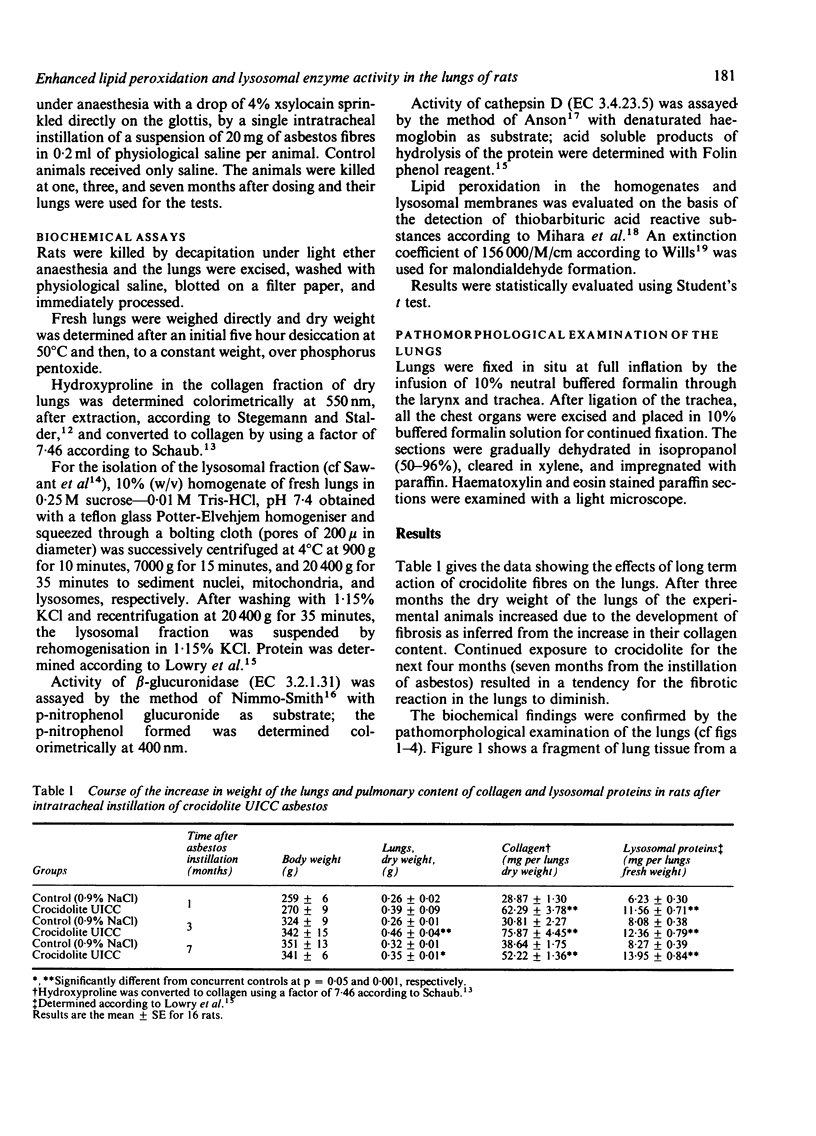
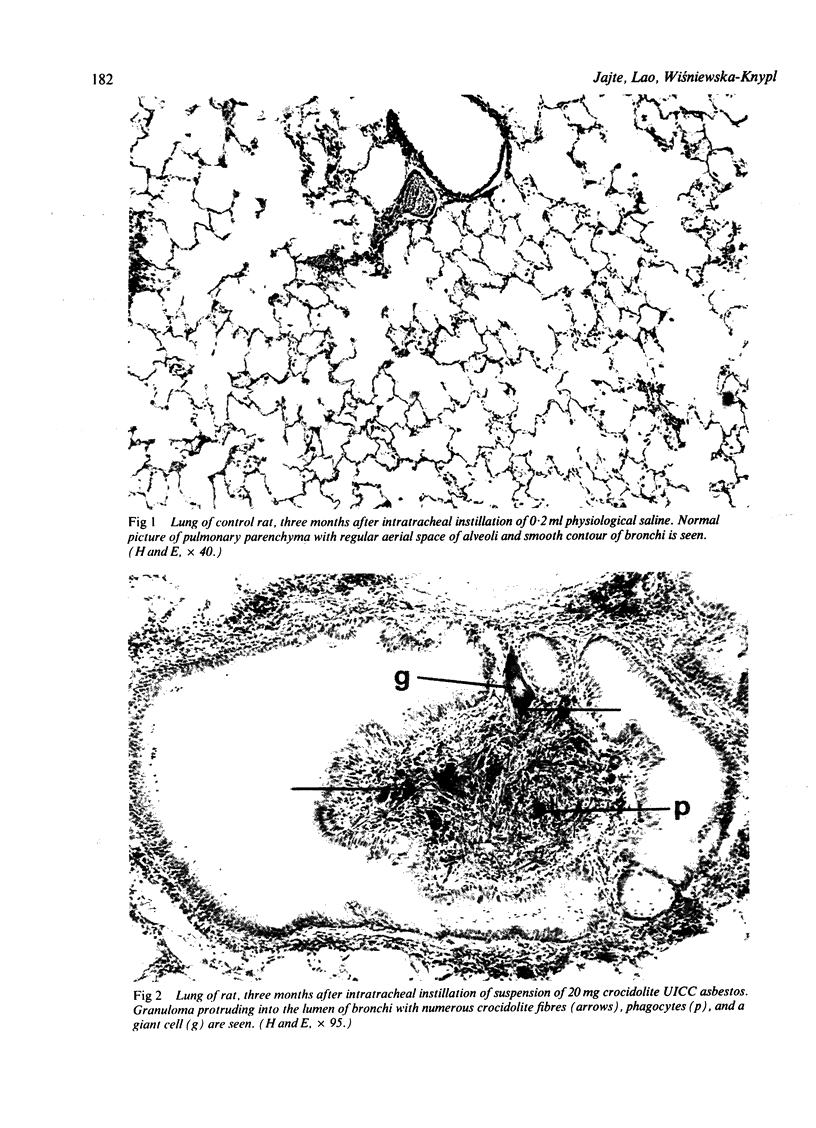
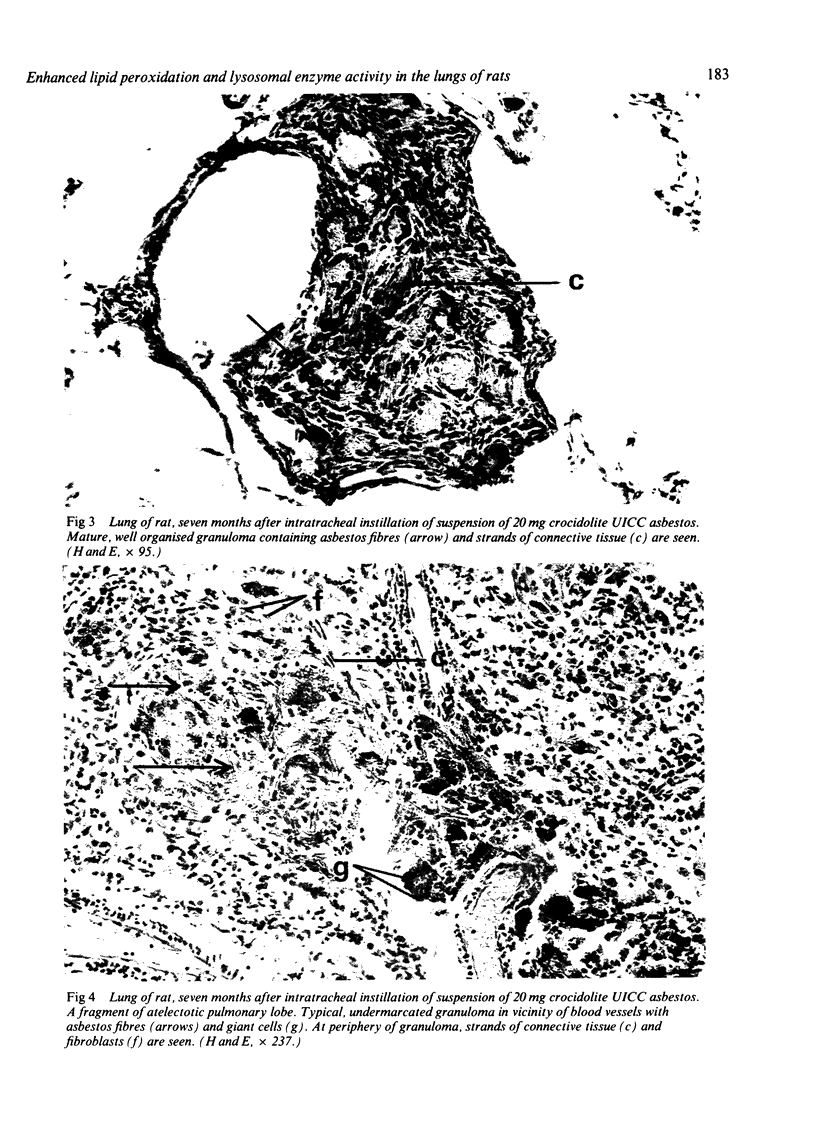
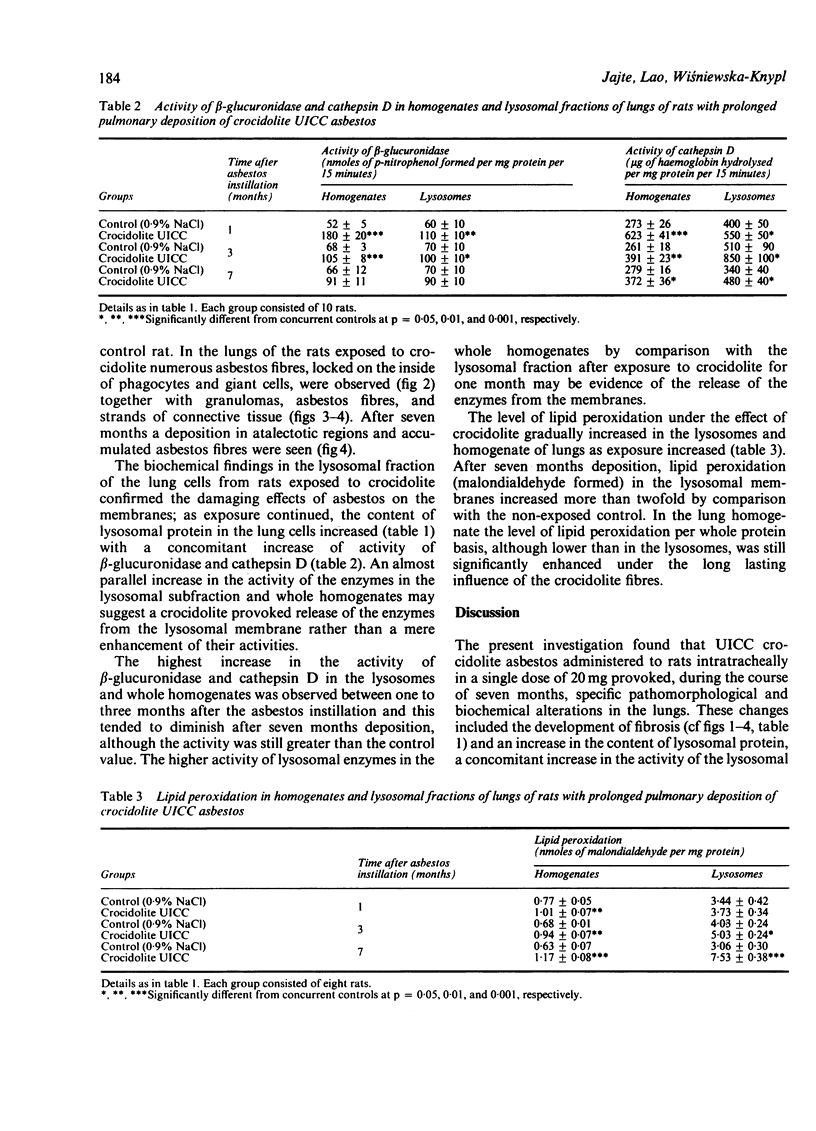
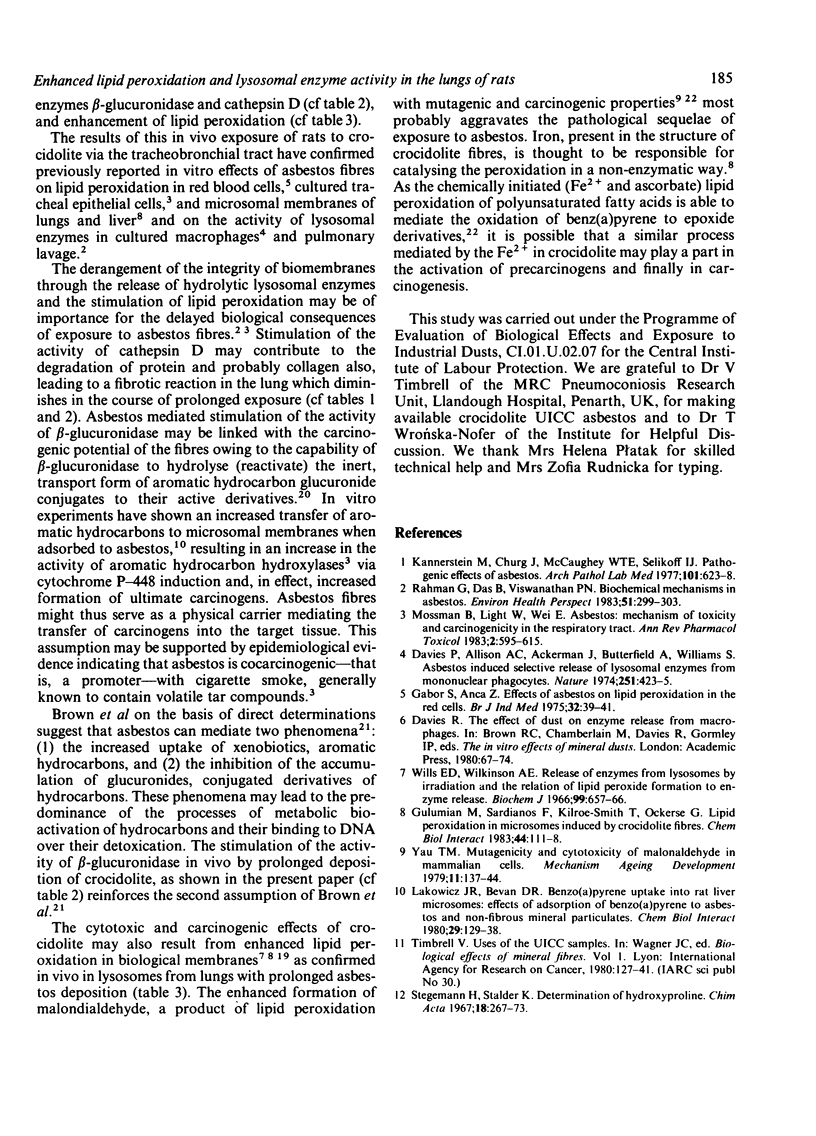
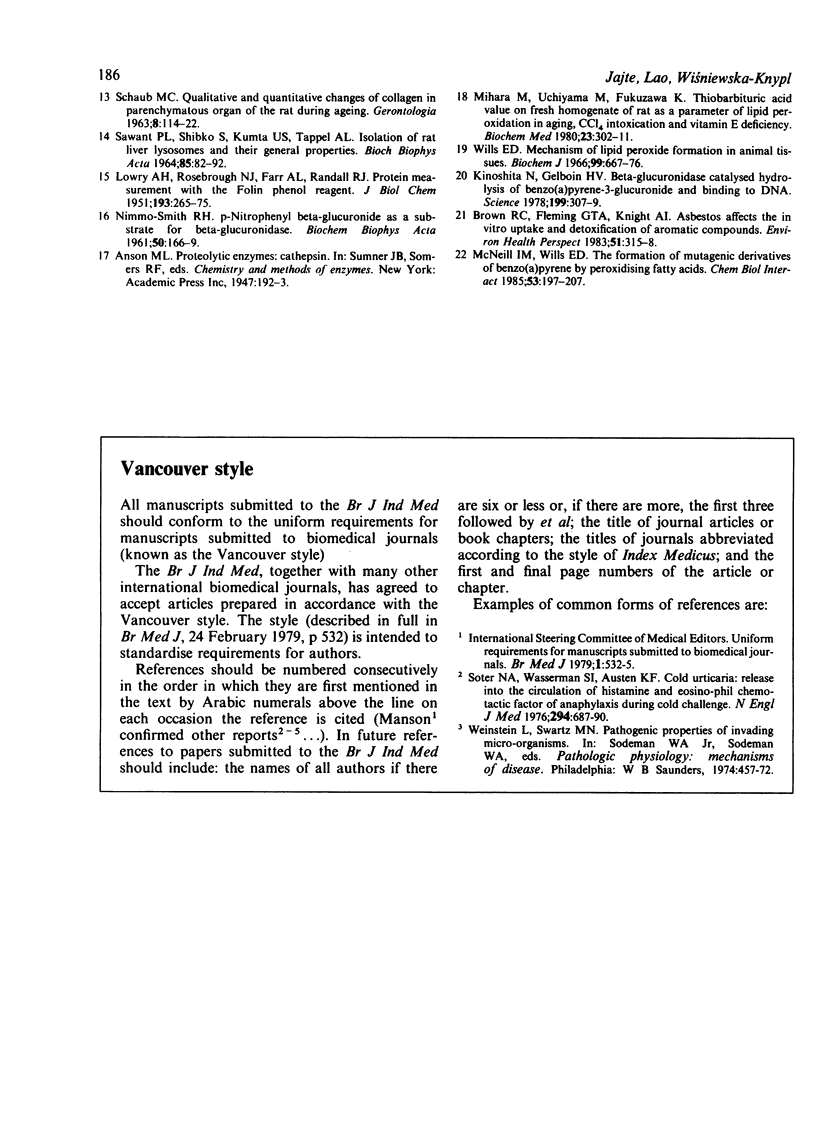
Images in this article
Selected References
These references are in PubMed. This may not be the complete list of references from this article.
- Albro P. W., Corbett J. T., Schroeder J. L., Jordan S. T. Incorporation of radioactivity from labeled Di-(2-ethylhexyl)phthalate into DNA of rat liver in vivo. Chem Biol Interact. 1983 Apr-May;44(1-2):1–16. doi: 10.1016/0009-2797(83)90125-4. [DOI] [PubMed] [Google Scholar]
- Brown R. C., Fleming G. T., Knight A. I. Asbestos affects the in vitro uptake and detoxification of aromatic compounds. Environ Health Perspect. 1983 Sep;51:315–318. doi: 10.1289/ehp.8351315. [DOI] [PMC free article] [PubMed] [Google Scholar]
- Davies P., Allison A. C., Ackerman J., Butterfield A., Williams S. Asbestos induces selective release of lysosomal enzymes from mononuclear phagocytes. Nature. 1974 Oct 4;251(5474):423–425. doi: 10.1038/251423a0. [DOI] [PubMed] [Google Scholar]
- Gabor S., Anca Z. Effect of asbestos on lipid peroxidation in the red cells. Br J Ind Med. 1975 Feb;32(1):39–41. doi: 10.1136/oem.32.1.39. [DOI] [PMC free article] [PubMed] [Google Scholar]
- Kannerstein M., Churg J., McCaughey E., Selikoff I. J. Pathogenic effects of asbestos. Arch Pathol Lab Med. 1977 Dec;101(12):623–628. [PubMed] [Google Scholar]
- Kinoshita N., Gelboin H. V. beta-Glucuronidase catalyzed hydrolysis of benzo(a)pyrene-3-glucuronide and binding to DNA. Science. 1978 Jan 20;199(4326):307–309. doi: 10.1126/science.619459. [DOI] [PubMed] [Google Scholar]
- LOWRY O. H., ROSEBROUGH N. J., FARR A. L., RANDALL R. J. Protein measurement with the Folin phenol reagent. J Biol Chem. 1951 Nov;193(1):265–275. [PubMed] [Google Scholar]
- Lakowicz J. R., Bevan D. R. Benzo[a]pyrene uptake into rat liver microsomes: effects of adsorption of benzo[a]pyrene to asbestos and non-fibrous mineral particulates. Chem Biol Interact. 1980 Feb;29(2):129–138. doi: 10.1016/0009-2797(80)90027-7. [DOI] [PubMed] [Google Scholar]
- McNeill J. M., Wills E. D. The formation of mutagenic derivatives of benzo[a]pyrene by peroxidising fatty acids. Chem Biol Interact. 1985 Feb-Apr;53(1-2):197–207. doi: 10.1016/s0009-2797(85)80096-x. [DOI] [PubMed] [Google Scholar]
- Mihara M., Uchiyama M., Fukuzawa K. Thiobarbituric acid value on fresh homogenate of rat as a parameter of lipid peroxidation in aging, CCl4 intoxication, and vitamin E deficiency. Biochem Med. 1980 Jun;23(3):302–311. doi: 10.1016/0006-2944(80)90040-x. [DOI] [PubMed] [Google Scholar]
- Mossman B., Light W., Wei E. Asbestos: mechanisms of toxicity and carcinogenicity in the respiratory tract. Annu Rev Pharmacol Toxicol. 1983;23:595–615. doi: 10.1146/annurev.pa.23.040183.003115. [DOI] [PubMed] [Google Scholar]
- NIMMO-SMITH R. H. p-Nitrophenyl-beta-glucuronide as substrate for beta-glucuronidase. Biochim Biophys Acta. 1961 Jun 10;50:166–169. doi: 10.1016/0006-3002(61)91074-5. [DOI] [PubMed] [Google Scholar]
- Rahman Q., Das B., Viswanathan P. N. Biochemical mechanisms in asbestos toxicity. Environ Health Perspect. 1983 Sep;51:299–303. doi: 10.1289/ehp.8351299. [DOI] [PMC free article] [PubMed] [Google Scholar]
- SAWANT P. L., SHIBKO, KUMTA U. S., TAPPEL A. L. ISOLATION OF RAT-LIVER LYSOSOMES AND THEIR GENERAL PROPERTIES. Biochim Biophys Acta. 1964 Apr 6;85:82–92. doi: 10.1016/0926-6569(64)90169-5. [DOI] [PubMed] [Google Scholar]
- Soter N. A., Wasserman S. I., Austen K. F. Cold urticaria: release into the circulation of histamine and eosinophil chemotactic factor of anaphylaxis during cold challenge. N Engl J Med. 1976 Mar 25;294(13):687–690. doi: 10.1056/NEJM197603252941302. [DOI] [PubMed] [Google Scholar]
- Stegemann H., Stalder K. Determination of hydroxyproline. Clin Chim Acta. 1967 Nov;18(2):267–273. doi: 10.1016/0009-8981(67)90167-2. [DOI] [PubMed] [Google Scholar]
- Wills E. D. Mechanisms of lipid peroxide formation in animal tissues. Biochem J. 1966 Jun;99(3):667–676. doi: 10.1042/bj0990667. [DOI] [PMC free article] [PubMed] [Google Scholar]
- Wills E. D., Wilkinson A. E. Release of enzymes from lysosomes by irradiation and the relation of lipid peroxide formation to enzyme release. Biochem J. 1966 Jun;99(3):657–666. doi: 10.1042/bj0990657. [DOI] [PMC free article] [PubMed] [Google Scholar]






